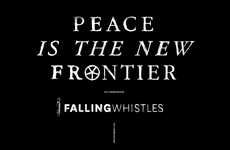



Using fear to drive social concern among consumers
Implications - Self fearvertising is often used by marketers to convince consumers to buy products so they can alleviate their fears of turning into unwanted versions of their future selves -- for example, the fear of becoming someone who is overweight, bald or a bad parent. Now, social cause marketers are turning to social fearvertising, in which the fear elicited is not fear for oneself, but rather fear for others. This naturally draws upon feelings of guilt, which in turn persuades consumers to notice or take action about some particular social cause or issue.
Trend Themes
1. Social Fearvertising - Social cause marketers are turning to social fearvertising, which elicits fear for others and promotes social awareness or action.
2. Activism Via Social Media - Campaigns like Kony 2012 heavily rely on social media, showing a new wave of activism reaching much larger audiences.
3. Vigilance Advertising - Campaigns like City of Vancouver People are Fragile aim to increase vigilance and promote the importance of safety over convenience.
Industry Implications
1. Marketing - The rise of fearvertising highlights a shift in marketing, and further opportunities lie in campaigns aimed at social causes or activism.
2. Nonprofit - Ads and campaigns promoting social causes present opportunities for nonprofits to create awareness and promote action or donation.
3. Healthcare - Vigilance advertising can be directed at healthcare, urging patients to also take responsibility for their own safety.






















































